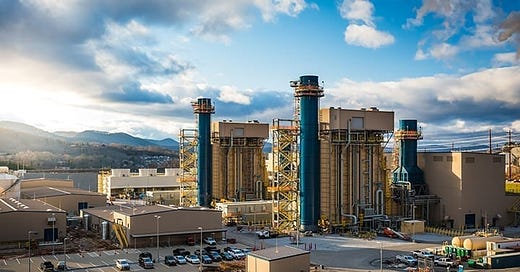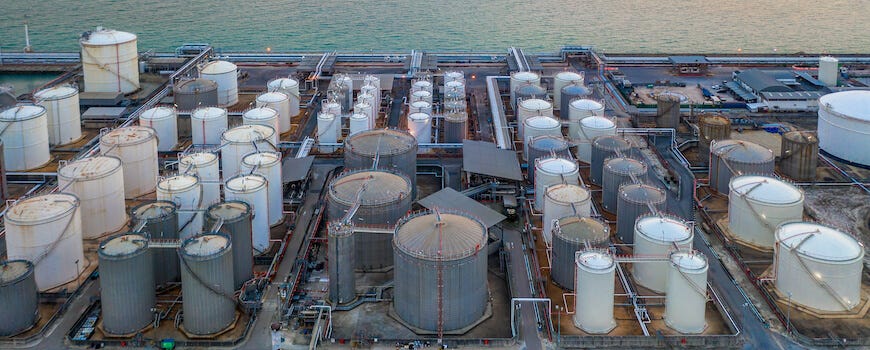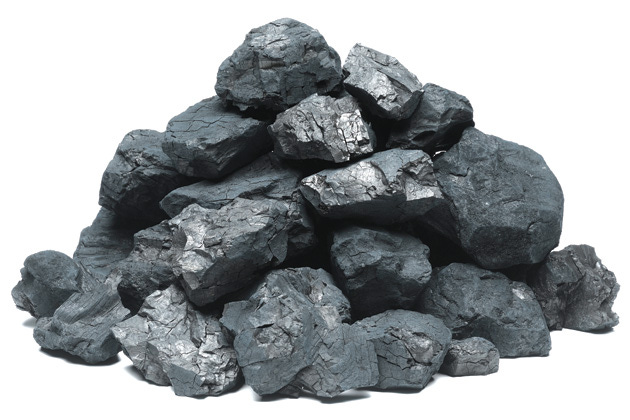A simple and cost-effective plan to quickly lower US carbon emissions
Why are we not doing it?
Make someone’s day: Gift a subscription to your friends and family!
Energy policy in the United States and other Western nations is misguided. Currently, virtually all of them are committed to something like Netzero carbon dioxide emissions by 2050. To achieve this goal, it will require the virtual elimination of fossil fuel usage by that year.
The preferred method of doing so is a suite of government subsidies and mandates that encourage:
The construction of wind/solar electrical plants and electric vehicles.
The rapid decommissioning of coal/natural gas electrical plants and internal combustion engines.
I believe this government-sponsored Green Energy Transition is the wrong strategy as it will:
Fail to achieve its goal of Netzero by 2050
Make virtually no difference in future global temperatures.
Cost tens of trillions of dollars (an estimated $1.77 in 2023 alone)
Greatly increase energy prices
Undermine long-term economic growth
Undermine the material standard of living for the working class and poor
Make it far more difficult for developing nations to industrialize.
The trend line was already good
The reality is that Western nations were already decarbonizing long before Green energy policies were implemented or anyone was aware of global warming. They did so via the Third Energy Transition (replacing coal with a blend of natural gas, nuclear, and hydroelectric power).
The Third Energy Transition can be clearly seen in the energy data for the:
USA (mainly via Shale gas after 2005)
Germany and UK (mainly via increased natural gas well before 2000)
France and Belgium (mainly via nuclear)
Finland, Sweden, and Switzerland (mainly via a blend of hydro and nuclear)
Norway, Brazil, and Canada (mainly via hydro)
The problem is that Greens, and the Left in general, are generally hostile to natural gas, nuclear, and hydro-electric power. They simply do not understand some key facts that I have already spelled out in previous articles:
Vast amounts of controllable energy are essential for material progress for wealthy and developing nations. Fossil fuels will play the dominant role for the foreseeable future.
Greens make a mistake lumping natural gas with coal by using the category “fossil fuels.” By far the biggest producer of global carbon emissions is coal, particularly in Asia.
A new Combined-Cycle Gas Turbine plant (CCGT) emits one-third the carbon dioxide emissions as an existing coal plant and virtually eliminates all other pollutants.
Natural gas is the most cost-effective energy source for phasing out coal in all its applications.
A blend of natural gas, nuclear, and hydro-electric power are far superior means to:
reduce carbon emissions while
maintaining long-term economic growth than Green energy policies.
Solar and wind, even with batteries, cannot possibly replace coal in the USA or Asia. Increased solar and wind is almost always in addition to coal rather than replacing the burning of coal.
The Shale gas revolution in the United States offers a fabulous opportunity for North America to “have its cake and eat it too” by simultaneously promoting long-term economic growth and radically lowering carbon emissions.
The technologies, skills, and organizations associated with the Shale gas revolution can be exported from the USA to the rest of the world if foreign governments allow it to happen.
Shale gas reserves are widely dispersed throughout the world and are likely to grow substantially in the future. The main barrier to spreading the Shale gas revolution to the rest of the world is government policy.
See also my other posts on Energy:
An alternative policy
Rather than fight against the Third Energy Transition, we should embrace it. Congress should pass legislation to:
Replace all existing coal-burning electrical plants in the United States with brand-new CCGT plants within 5 years. By my estimates, it would cost only $148 billion to replace every American coal plant with CCGT. This is less than 30% of the cost of the recent Inflation Reduction Act of 2022 (US EIA 2018, Frank).
Eliminate federal regulations that unnecessarily slow down and increase the costs for energy exploration, production, and distribution. This would benefit all energy sources, including solar and wind.
Phase out all subsidies and mandates for solar and wind power. Once coal is eliminated, the environmental benefits of solar and wind are minimal.
Solar will still be economically viable during the daytime for roughly six months per year in the Southwest and Florida. With falling solar prices, there is no reason to subsidize it, particularly in regions with low solar radiance.
Wind will still be economically viable in the Great Plains. There is no reason to subsidize it, particularly in regions with low wind levels.
Construct natural gas pipelines to connect the new Shale gas fields with the new CCGT plants. This will reduce methane emissions and decrease the cost of natural gas.
Once all CCGT plants are fully commissioned, impose a coal tax on all goods mined, processed, transported, and manufactured using coal or electricity generated from coal.
This will give the entire world, particularly China, a strong economic incentive to move off coal. Such a coal tax is the only viable way to reduce Chinese coal use which is the principal cause of global carbon emissions.Create innovation prizes for new energy sources that have all the advantages of fossil fuels and nuclear power but without pollution, radiation, or carbon emissions.
Use the revenues from the coal tax to pay for all of the above.
Replace coal with CCGT
The key part of my proposal is to replace all existing coal-burning electrical plants with brand-new Combined-Cycle Gas Turbine plants (CCGT). As I mentioned before, CCGT plants emit one-third of the carbon dioxide emissions as an existing coal plant and virtually eliminate all pollutants.
This alone will do far more to reduce carbon dioxide emissions and pollutants than all the existing solar and wind constructed so far. Whereas virtually all solar and wind power is in addition to coal, natural gas can replace coal.
Combined-Cycle Gas Turbine plants (CCGT) have many advantages over solar and wind. CCGT plants:
Are proven technologies that require no learning or innovation.
Have much lower initial construction costs than any other energy source
Are easily scalable based on local electrical demand
Can be installed and run efficiently anywhere in the United States. The plant only has to be near a natural gas pipeline. This is particularly an advantage in the eastern half of the United States which has low levels of solar radiance and wind.
Can be manufactured and installed in less than one year. No other energy source can come close to that speed of going from idea to full production.
Can run 24/7/365 as a baseload electrical source (like coal and nuclear, but unlike solar and wind)
Can start up in less than 30 minutes, so they can modulate with customer demand (unlike coal, solar, wind, and most nuclear)
Are very compact, so they:
are easily transportable from the factory to the site using conventional rail and trucking
have minimal impact on wild habitats (unlike solar, wind, and hydro)
can easily be installed within the footprint of existing coal plants. This means that there is no need for permitting, environmental reviews, and land access battles. You just purchase the plant, install it, and then turn off the old coal plant (this is a huge advantage over solar and wind which take up large tracts of land far from cities).
There is no need to connect them to the grid with expensive and politically controversial electrical lines (although gas pipelines will likely need to run to the power plant). This is another huge advantage over solar and wind.
Can potentially replace less energy-efficient Simple Gas Turbines, which are typically used as “peakers” to balance customer demand with intermittent solar and wind production.
Require no higher production numbers than the United States accomplished in and around the year 2002-2003. There is no reason to believe that current manufacturers like General Electric cannot quickly ramp up for demand.
If my proposal had been passed instead of the IRA in 2022, we would already be reducing carbon at a much faster rate than we are now.Give a solid foundation for low-carbon charging of electric vehicles at night when solar is useless and wind is erratic. Since the transportation sector emits more carbon than electricity in the United States, this is a key issue that is often ignored by EV advocates.
Work extremely well with solar. In high solar radiance regions like the Southwest, you could run solar + batteries for 4-6 months per year and CCGT for the other 6-8 months per year. This radically reduces the amount of utility-scale batteries needed to make solar viable during the night hours.
Coal Tax
An important part of my proposed energy policy should be an international coal tax. The coal tax would work if it is exclusively implemented in the United States, but ideally it would be implemented in all wealthy nations. A coal tax implemented in the United States, Europe, and Japan could have a dramatic effect on global carbon emissions without disrupting global economic growth and maintaining affordable energy.
A coal tax would be levied on all products that are mined, refined, or manufactured anywhere on the planet using coal power. Most importantly, the tax would be levied on all goods, regardless of their point of origin: domestic or imported.
Nations that implement the coal tax would estimate the amount of total coal burned to create that product in the specific nation that produced it. Getting an exact amount would be very difficult, but all that is really needed is a rough estimate that is consistently applied to each nation and product. Since much coal usage comes from electricity, the overall percentage of electricity generated from coal would be a key part of the equation.
The amount should be equivalent to a carbon tax of $100 per ton of carbon dioxide. The coal tax should only be imposed once Congress agrees to pay for the rapid replacement of coal-burning power plants with the most energy-efficient combined-cycle natural gas power plant (CCGT). This would immediately reduce carbon emissions from those power plants by about two-thirds and even more radically reduce pollutants.
The coal tax would give American industries that currently use coal in their manufacturing processes a strong incentive to switch to natural gas. For most manufacturing processes, natural gas can substitute for coal (and crude oil) where it is economically feasible. As long as gas pipelines are in their general area, this should be a fairly smooth transition. All of this means that the United States could quickly phase out coal in favor of natural gas in 10 years and accomplish most of this transition in 5 years or less.
Best of all, this will cause no disruption for American consumers. They will probably notice no change at all, except for far less haze in the sky and cleaner air. The Shale Revolution has made natural gas so cheap that their electrical bills will probably get cheaper.
With a highly dependable domestic market, natural gas producers in the shale fields would have a strong incentive to ramp up production and keep prices relatively constant. Given that shale sites require only a few weeks to ramp up production, keeping prices low and stable should not be too much of a problem.
In theory, the coal tax might also stimulate construction of nuclear and hydroelectric power plants, but given their very high construction costs and long construction periods, it seems unlikely in the short term. Natural gas drill pads can ramp up production so fast that coal will probably be almost completely phased out before the first new nuclear or hydroelectric plant comes online.
Once coal is fully phased out in the United States, then our energy system can make decisions based on cost and dependability, just as it did before Green energy policies were implemented. With coal completely phased out, there is no reason for the government to choose between low-carbon natural gas and zero-carbon solar, wind, nuclear and hydroelectric.
Better Than a Carbon Tax
The purpose of my proposed coal tax is to give companies and nations a strong economic incentive to move beyond coal power. In some ways, this tax is similar to a carbon tax, often favored by more moderate climate activists, but it is levied exclusively on coal. In another article, I explained why I am against a carbon tax.
Carbon taxes are designed to give companies an incentive to shift to carbon-free energy sources. The problem is that carbon taxes disincentivize natural gas and crude oil, which currently have no viable alternatives. In particular, since natural gas is the most cost-effective means in the United States to reduce carbon emissions while maintaining a stable and affordable energy system, carbon taxes create very bad incentives.
Carbon taxes increase the cost of energy without creating any direct benefits. Companies or consumers will have to pay the taxes and then, on top of that, pay for the construction of the infrastructure required to lower carbon emissions. With the coal tax that I am proposing, the revenue generated from the coal tax would go directly into building up the Third Energy Transition energy infrastructure.
Right now, we should not be trying to get off fossil fuels. We should be trying to get off coal. A modern combined-cycle natural gas plant (CCGT) generates only one-third of the carbon emissions of an older coal-burning power plant. Because CCGT plants are very inexpensive to construct, they are the most cost-effective replacements for coal plants.
Carbon taxes also tax crude oil, which currently does not have a viable alternative for transportation. Electric cars are still in their infancy, and they will remain so if the electrical grid is powered largely by solar and wind. Once the electrical grid of wealthy nations is powered largely by natural gas, nuclear power, and hydroelectric dams, then and only then is the electrification of transportation at scale viable.
A coal tax should be combined with a widespread rollback of regulations that undermine the exploration, drilling, and transportation of natural gas. The United States has the expertise to exploit conventional gas fields and shale gas fields in Europe and Asia, but they are restricted from doing so by government regulations.
Eliminating solar and wind subsidies and mandates
To be clear, I am not opposed to solar and wind power. In fact, I am been an advocate for their expansion for over 40 years. I am opposed to government-sponsored subsidies and mandates that increase electricity costs while having little impact on carbon emissions.
Any energy policy that embraces the concept of human material progress should include the following goals:
Create an energy system that is abundant, affordable, and secure. This will keep human material progress going. This should include both wealthy and developing nations.
Mitigate the negative side-effects of that progress on the natural environment. This includes carbon emissions, air pollution, water pollution, wild habitat destruction, extinctions, and human health concerns.
I strongly believe that in North America CCGT plants are far more cost-effective at accomplishing both of the above goals than solar and wind. Once CCGT plants fully replace coal power plants, there is really no reason for federal and state governments to subsidize solar and wind. While solar and wind obviously have lower carbon emissions, they also have negative environmental impacts on:
Land use, which is far more important than carbon emissions. Rather than promoting wind and solar, preserving natural habitats should be the key goal of environmentalists. Utility-scale solar and wind projects use vast amounts of land, which can be potentially protected for wild habitat. Regardless of future temperatures, life needs wild habitat. Without wild habitat, future temperatures do not matter very much.
Bird populations (onshore wind)
Whale populations (offshore wind)
More to the point, if the advocates for solar and wind are correct that their preferred energy source is cheaper than fossil fuels, then there is no need for subsidies and mandates. In the long run, lower costs will triumph.
The elimination of subsidies and mandates will not kill the solar and wind industries. It will give them additional incentives to make their products cheaper. As I mentioned before, solar will still be economically viable during the daytime for roughly six months per year in the Southwest and Florida. With falling solar prices, there is no reason to subsidize it, particularly in regions with low solar radiance. Wind will still be economically viable in the Great Plains. There is no reason to subsidize it, particularly in regions with low wind levels. And hydroelectric will still be economically viable in the Northwest and other scattered regions.
The focus of our electrical grid should be producing cheap electricity 24/7/365. Solar/wind subsidies and mandates only make that goal more difficult to achieve.
See also my other posts on Energy:











I can't find the MIT study where they picked an 80-year time frame to average the effects of methane on the troposphere and stratosphere - and googling now finds so many MIT studies on methane I can't find the one.
Anyway, it handed me the figure that if methane power generation hits 4% leakage, the overall industry is doing as much climate damage as coal. Half from CO2, the 4% methane is as bad as the other half. Of course, the industry claims 0.25% leakage. Studies of their plumes proved that at best an exaggeration, and some have figured closer to 2.5% than 0.25%.
No idea, but if you assumed linearity, that the total "Percent as bad as coal" figure was:
50% + (2.5/4)(50%) = 81% as bad as coal, for the climate, if not for your asthma.
It's still a switch worth making, I'd take 19% less warming, plus way cleaner air(!)
But may fail investment relative to investing in renewables.
I'm very optimistic about the future of solar and batteries but I'm also pro combined cycle gas power plants as bridging technology. Not optimistic about nuclear (doesn't mean I'm anti nuclear).
I'm also pro pushing more gas turbines for shipping. Full disclosure my research will benefit from this trend.